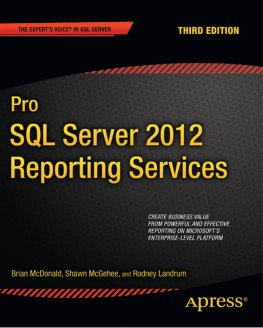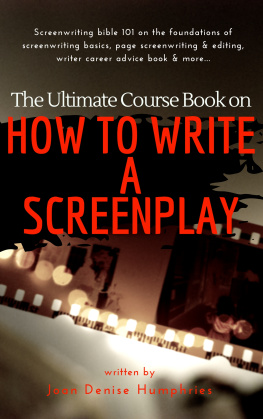Tell them what you told them
I wasn't sure how to end this book until I gave it to a friend to read and she told me that she enjoyed the book because she and I share the same taste in films. I knew then that I had failed to get my point across. This is not about personal taste.
The idea that one could view a story through the lens of objectivity is so foreign to some that they don't even know it is a possibility. But if you are to master this craft, that is what you must strive to do.
When you read a sentence and find a misspelled word or grammar mistake, do you think for an instant that it might just be your opinion? You probably don't. That's because you understand the language and its rules. When you are speaking with someone who has only rudimentary skills in your language, you can tell immediately, just as you will soon be able to do with the language of drama.
One of your tasks as a storyteller is to understand that the language of story has its own rules of grammar and syntax. If you were watching The Wizard of Oz and, in it, they decided the idea should be Dorothy's about how to get the apples from the trees; and then they had Tin Man come up with other plans; and at the end of the story, they said it was Scarecrow who had the brains all alongit would all be bad grammar. It would be a mistake, and you would know it.
Drama is a language, and its principles can be observed, learned, and executed. One way to master this skill is to try to understand what you respond to in a story. Ask yourself if you are having a personal reaction to something outside the story. If you abhor violence in stories and you read a book that has violence in it, ask yourself if it is there to support the story's armature.
Conversely, if you enjoy violence, ask yourself the same question. Is it necessary for the story to be told this way? If the story were The Godfather then the answer would be yes. If the story is Toy Story, then the answer is probably no.
Ask yourself this question about dialogue, costumes, scenery, photography, religion, language, personal philosophy, politics, a particular actor or actress, special effects, genre, music, and any other element that might find its way into a story. You will have strong feelings about some of these things and it will distort your view of a story.
I once had a student tell me that she hated E.T. because of the swearing. Most of us would be hard-pressed to remember any swearing in the film, but it was enough to ruin the film for her. Many of us do this kind of thing. We will love or hate something in a story for reasons outside the story itself.
We must take ourselves out of the equation if we are ever to learn to see and use story structure. This is not easy, but it is possible to do. To do this you may have to suffer the ritual pain of letting go of some of the things you hold dear. If you go to see films because of the special effects, you must not let them cloud your judgment about the quality of the piece. Ask yourself if the story has resonance for those who care little for effects, or photography, or your favorite actor. Does it have an armature and does every element in the story contribute to dramatizing that armature? To do this effectively, you may have to die as the writer you are in order to be reborn. When you do it, many things that are now muddy in your mind will become clear. You will ascend.
You will see the footprints in the grass.
Preface
Story structurethe writing below the surface of the wordsrevealed in a helpful guide for both writers and readers
Acclaimed by successful screenwriters and authors, Invisible Ink is a helpful, accessible guide to the essential elements of the best storytelling. Brian McDonald, an award winning screenwriter who has taught his craft at several major studios, supplies writers with tools to make their work more effective and provides readers and audiences a deeper understanding of the storyteller's art.
When people think of a screenplay, they usually think about dialoguethe "visible ink" that is readily accessible to the listener, reader, or viewer. But a successful screenplay needs Invisible Ink as well, the craft below the surface of words. Invisible Ink lays out the essential elements of screenplay structure, using vividexamples from famous moments in popular movies as well as from one of his ownpopular scripts. You will learn techniques for building a compelling story around atheme, making your writing engage audiences, creating appealing characters, and much more.
Praise for Invisible Ink:
If I manage to reach the summit of my next story it will be in no small part due to
having read Invisible Ink.
Andrew Stanton (cowriter Toy Story, Toy Story 2, A Bugs Life, Monsters, Inc.,
and cowriter/director Finding Nemo and WALL-E)
Brian McDonald uses his deep understanding of story and character to pass on
essential truths about dramatic writing. Ignore him at your peril.
Jim Taylor (Academy Award-winning screenwriter of Sideways and Election)
I recommend this fine handbook on craft to any writer, apprentice or
professional, working in any genre or form.
Dr. Charles Johnson (National Book Award-winning author of Middle Passage)
If you want to write scripts, listen to Brian. The guy knows what hes talking about.
Paul Feig (creator of NBCs Freaks and Geeks, co-executive producer The Office)
"With Invisible Ink Brian McDonald has written us a book to keep and heed forever
because through the simple, graceful, graspable, original wisdom of it, we might
just save our screenwriting lives.
Stewart Stern (Screenwriter of Rebel Without a Cause)
About Author:
A sought-after instructor and consultant, Brian McDonald has taught his story
seminar at Pixar Animation Studies, Disney Feature Animation, and George Lucass ILM.
His award-winning short film White Face has run on HBO and Cinemax and is
used in corporations nationwide as a diversity training tool. He blogs at http://invisibleinkblog.blogspot.com/
Chapter 1: What Is Invisible Ink?
There is no art which does not conceal a still greater art.
Percival Wild
A friend of mine once took an anthropology class in which she heard this story: An anthropologist was living among tribal people with little to no contact with the modern world. Wanting to share the marvels of technology with these isolated folks, the anthropologist took a photo of the chief and his wives. When the picture was processed and shown to the chief he was unable to recognize the blotches of black, white, and gray as an image of himself. He had never learned to translate two-dimensional images into recognizable three-dimensional shapes. That same chief, however, could look at a patch of grass and say what kind of animal had traversed it and how long ago with no more difficulty than you or I would have recognizing ourselves in a photographic image.
Story structure works very much this way. It is easy to see if you know what to look for, and invisible to those who dont.
Often when I listen to how people evaluate stories, I hear them talk about dialogue. When they talk about the script for a film, they are often talking about the dialogue. Or when they mention how well a book is written, they most often mean the way the words are put togetherthe beauty of a sentence.
When people speak of Shakespeares work, they almost always talk about the beauty of the language.
These are all forms of visible ink. This term refers to writing that is readily seen by the reader or viewer, who often mistakes these words on the page as the only writing the storyteller is doing.
Next page








![Watt - The 90-day screenplay : [from concept to polish]](/uploads/posts/book/103527/thumbs/watt-the-90-day-screenplay-from-concept-to.jpg)
